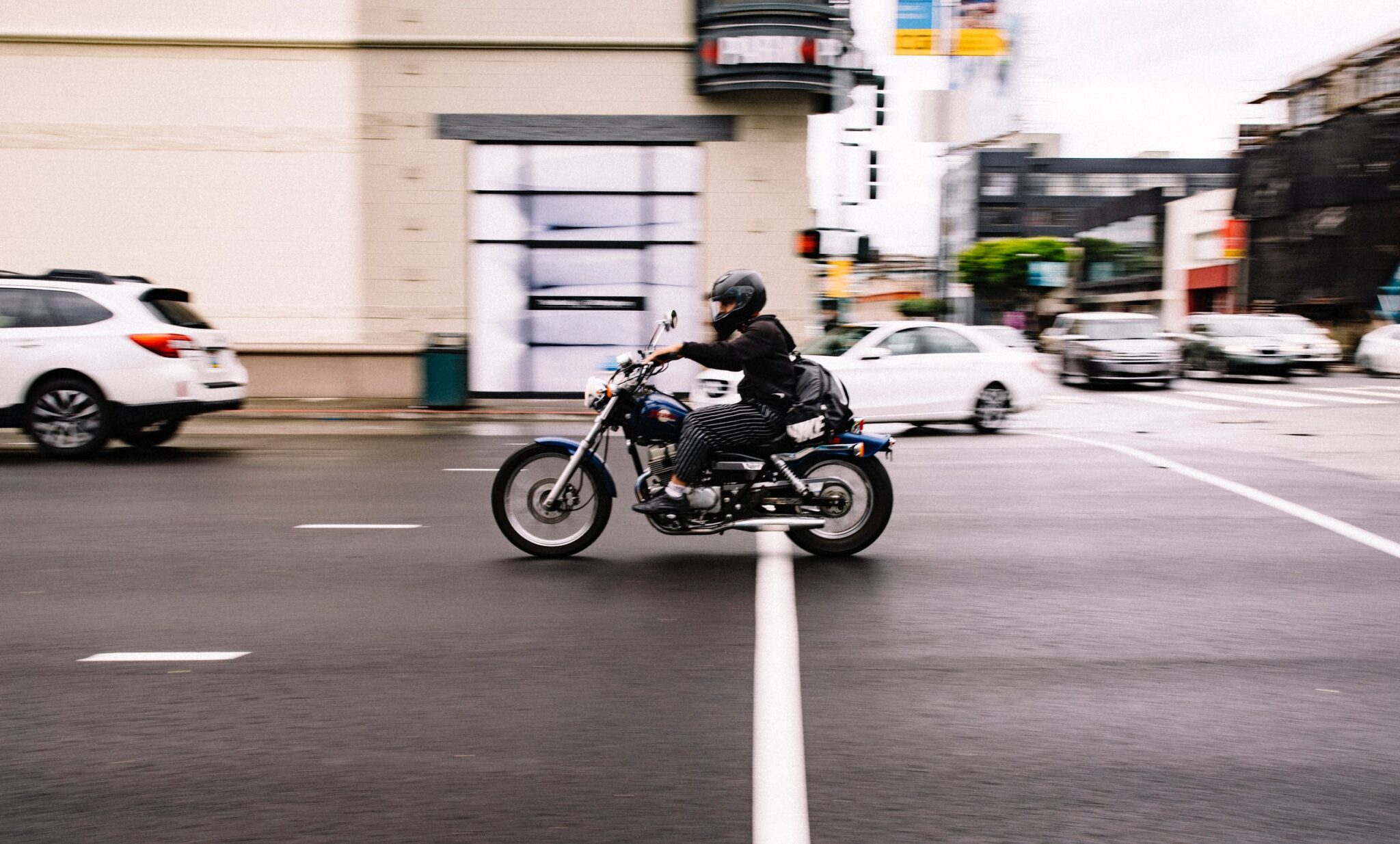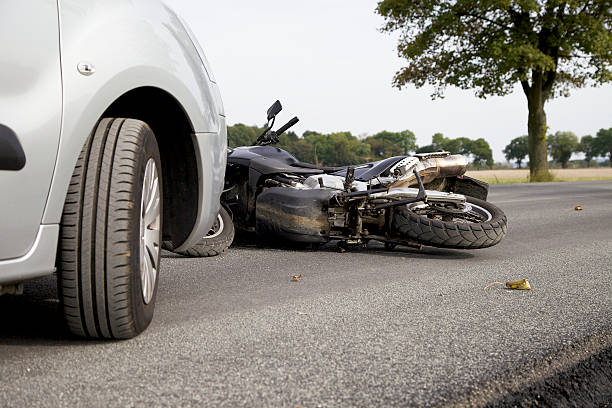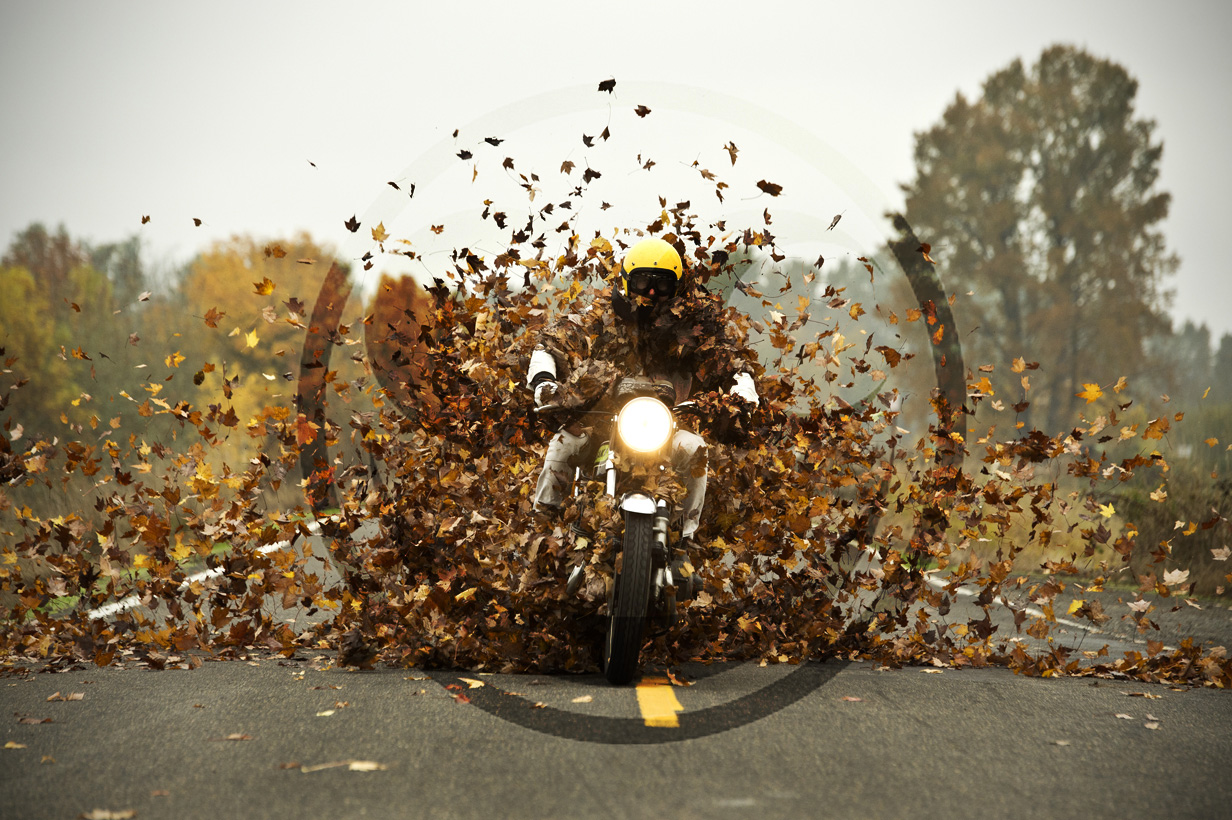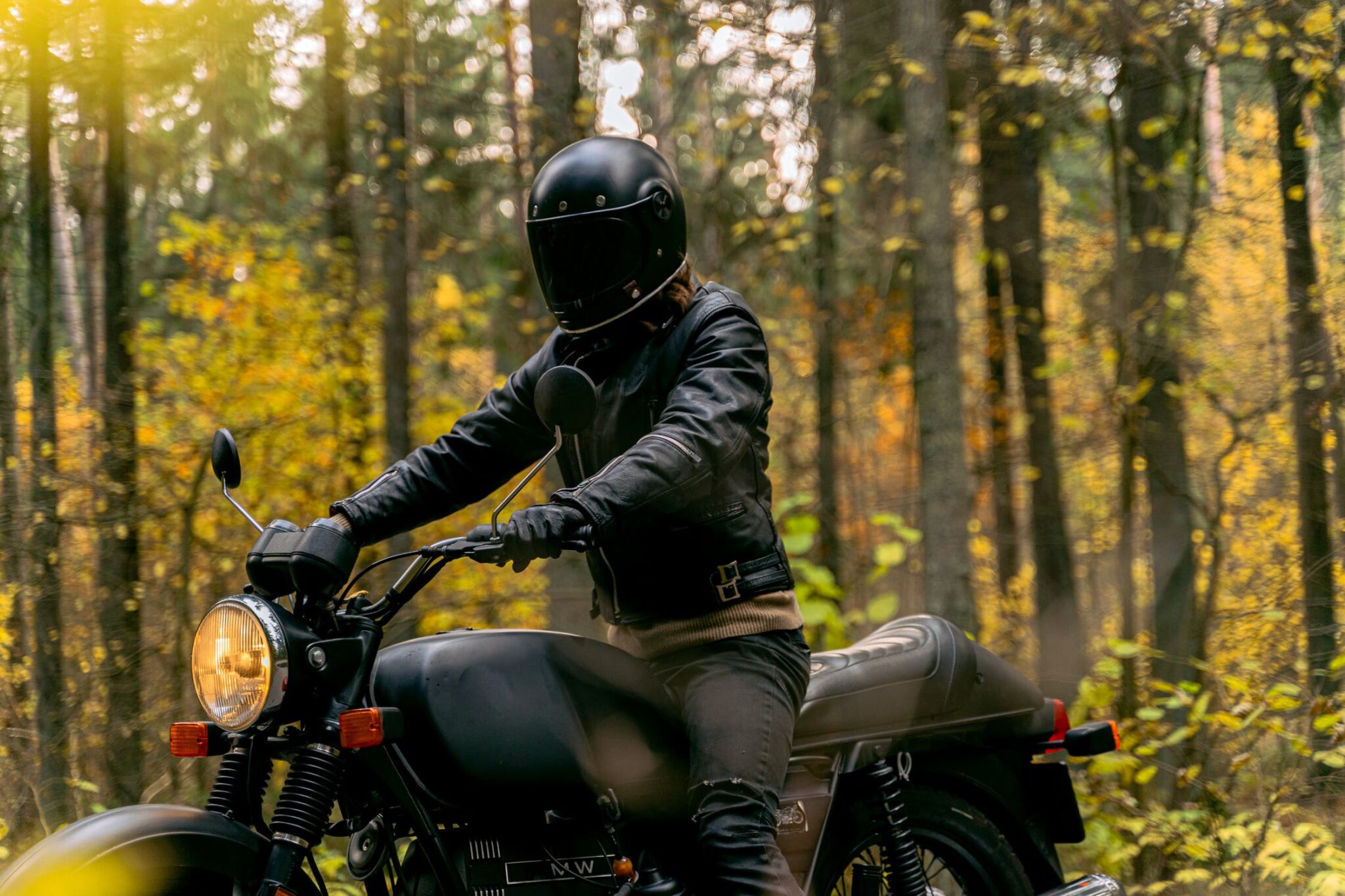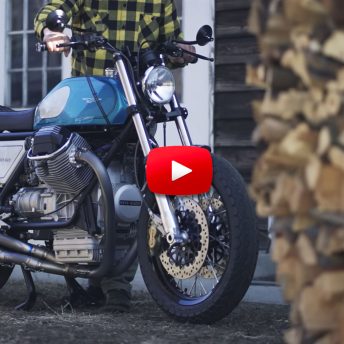Riding a motorcycle is all about risk vs reward. The risk is in the two wheels instead of four. The risk is in being completely exposed, without a protective steel, aluminum, or carbon composite cage around you to protect you. The risk is in being able to control the bike through turns, leaning, balancing, using the gyroscopic forces of the wheels to ride that thin line between exhilaration and meeting the pavement.
The rewards, however, are things that only we, the riders, truly understand. The demand of complete focus, awareness, of being one with the machine. The thrill of the wind rushing around your helmet, tugging at your jacket, almost begging you to push against it harder. The feeling of coming out of a corner, straightening the bike up while rolling on the throttle, the exhaust roaring in enthusiasm, the rear wheel biting in on the edges and propelling the machine towards the next corner.
One topic of risk vs reward, however, that is unpopular to talk about is that of accidents. Some of them are learning experiences, of how what we did as riders on the bike caused it to understeer, veer suddenly, or even potentially lowside or highside. Those are not the ones that we will be focusing on today.
Today, the types of accidents we will discuss are motorist vs motorcycle. We will examine the causes, what to do if you get into one, and what you can do as a rider to mitigate the risks.
What Causes Collision Accidents?
The simplest answer to the question that is the title of this section is negligence. It’s a great word, an umbrella term that encapsulates everything that could possibly go wrong. Riding while looking at your phone on the handlebar? Negligent because distracted. Front wheel falls off while riding? Negligent because of improper maintenance.
Yet, the term negligence does not specifically target us, the motorcycle riders. Ask any of your riding friends what scares them the most about riding on the road, and we’re willing to bet that over 80% of them will answer “other people” in one way or another. The other 20% will give a variety of answers regarding everything from weather to confidence.
The truth is, negligence is only one of a variety of factors that can cause accidents. We, as motorcyclists, know that to complete a ride safely, you need to be switched on, engaged, focused, and hyper aware about everything going on around us. Unfortunately, not all drivers share the same mindset.
Negligence in a car or truck often does not have as much consequence as negligence on a motorcycle does. What is a fender bender in a car is a rider getting tossed off their bike, even if the contact was minor. What could be a survivable accident in a car can very easily be fatal for a motorcycle rider.
Now, this isn’t to say that all drivers drive with negligence. Much like riders, a good portion of the driving community participates in the actual act of driving. They are aware, they scan their mirrors, they keep safe following distances, and effectively share the road. Even then, however, accidents do happen.
If the cause of the accident does not fall under distracted driving, impaired driving, or negligence on the part of the rider, the two most common causes that remain are road conditions and improper turns. And if you are a rider and didn’t wince a little at the second cause there, you’re lucky. The rest of us, while riding, have seen someone blow a stop sign joining the road we’re on, or seen someone try to sneak through a left turn at an intersection despite having a blinking yellow arrow or even a red light.
What To Do If You Are Involved In An Accident?
First and foremost, the first thing you should look after in an accident is yourself. If you are wearing appropriate gear with armor, a good helmet, and in the best case scenario a motorcycle airbag jacket or vest, you stand a relatively high chance of surviving the accident with minor to moderate injuries, or even no injuries at all. It’s called Personal Protective Equipment (PPE) for a reason.
Exchange insurance details with the other motorist, and collect contact information from any witnesses. This is doubly important in 2021, with the widespread adoption of dash cameras, helmet mounted cameras, bike cameras, and smartphones. If you are injured, get pictures and details, if possible, of your injuries.
According to the motorcycle accident experts at Denver Trial Law Firm, the next thing you should do is file a police report, either with a responding officer at the accident scene, in the hospital if you required medical treatment, or at the local police station even for a minor “Fender bender,” as soon as realistically possible. In most states, including Colorado, this is not only a good idea, but an actual legal responsibility.
With that information in hand, the remaining two things to do is create a claim file with your own insurance, but not the other party’s insurance, and contacting an attorney or law firm that specializes in motorcycle accidents. Your own insurance company will handle creating the claim with the other insurance company, and your attorney will handle all communications with both companies.
Why is it important to have an attorney involved? In large part, it is because they are intimately familiar with every step of the claims process, from economic recovery, such as damages to your bike or surprise fees and costs that you may not have been aware about, to personal injury treatment and recovery.
The other major reason to contact an attorney is so that the other party’s insurance doesn’t attempt to force a settlement. Often, those that represent themselves fail to take into account the entirety of what insurance covers, and will often pursue only the immediate costs, such as damages to the motorcycle and immediate medical fees. Even then, some insurance companies will offer what they say is “their best possible settlement,” and it turns out to be a lowball offer. However, once a claim is settled, it is extremely difficult to pursue any further recovery.
Accident attorneys are familiar with the costs that may appear a month, three months, a year, or even years ahead, and will fight for every cent that you are owed. You may need physical or mental therapy for many years, and they can fight to get that covered. You may need an extended hospital stay, and they will fight to get you compensation for that, as medical treatment and extended stays can easily breach into the range of several hundreds of thousands, if not over a million dollars.
Basically: Get. An. Attorney.
Mitigating Risks
At this point, we’re familiar with how collision accidents occur, and what to do after you’ve been in one. The only other thing we can realistically talk about is how to best protect yourself, both in the physical sense and the legal sense.
It is a very scary fact that most states in the union do not have mandatory helmet laws in place for anyone over the age of 18 or 21. In fact, only Alabama, California, Georgia, Louisiana, Maryland, Massachusetts, Mississippi, Nebraska, Nevada, New Jersey, New York, North Carolina, Oregon, Tennessee, Vermont, Virginia, Washington (D.C. and State), and West Virginia require a helmet to be worn at all times!
As such, in the physical sense, mitigating risk involves wearing correct gear to best protect yourself. In order of importance, helmet, gloves, jacket, boots, and pants are the gear you should wear at all times, and make sure they are rated for motorcycle use. In states where it gets quite humid or warm, mesh gear exists that allows for maximum airflow and heat release, without skimping out on armor or protection.
Keeping your bike in top mechanical shape is also important in mitigating physical risk. Your owners manual should have a maintenance schedule in an appendix, or even as one full chapter about your bike. Performing a full walk around check before riding is vital. Make sure you keep up on your chain lube intervals (usually 300 to 400 miles for most bikes). Much like a sharp knife vs a dull knife, a well maintained bike is much safer than a rusty one.
In the legal sense, the best way to protect yourself is to not break any laws. Sounds simple, yet the next time you join onto the freeway or even a feeder road, once you feel you’re at speed, glance at your speedometer. You will be surprised that you may already be above the speed limit without even feeling it. Make sure that you know your state’s laws regarding lane filtering and lane splitting, and know the difference between the two.
As well, never ride angry. You can take a ride to reduce stress, to focus entirely on the activity of riding, of feeling the freedom from everyday life that it allows us riders to feel. However, riding angry can lead to you focusing more on the anger, on the reason for the anger, and lose your edge of awareness as you ride. It can also cause you to react poorly in “near-miss” situations, and in a motorcycle vs car/truck battle of road rage, a car wins every time.
It is also highly advisable that you record every ride somehow. There are multiple options to do so, from motorcycle “dash cameras” that integrated into the circuitry of the bike and start recording the moment you flick the kill switch to “on” to wearable cameras such as GoPro (and associated action cameras) and comm-camera integrated devices like the SENA 10C line. Be aware of what your state’s laws are regarding “helmet modifications,” however, as while the ones integrated into comms systems are legal, some states prohibit attaching devices to the helmet that protrude a certain amount, even on breakaway mounts, as they may “potentially affect the functionality of the helmet, reducing protection.”
Video evidence can make or break an insurance claim or lawsuit. If you record your ride, in full PPE, correctly following all laws of the road, and get into an accident that was in no way, shape, or form your fault, a video of that accident is what many attorneys will call the “golden nugget.” It’s an impartial, non-human, real-time recording of the event from the perspective of the rider.
Mitigate your physical and legal risks, ride aware, ride focused, ride calm. Record your ride in a legal manner. Properly maintain and inspect your bike. Remember the basics of handling a motorcycle, and practice the stuff that you need to polish up on in a safe environment (more often than not a parking lot). And you will make it home, 99 out of 100 times.
